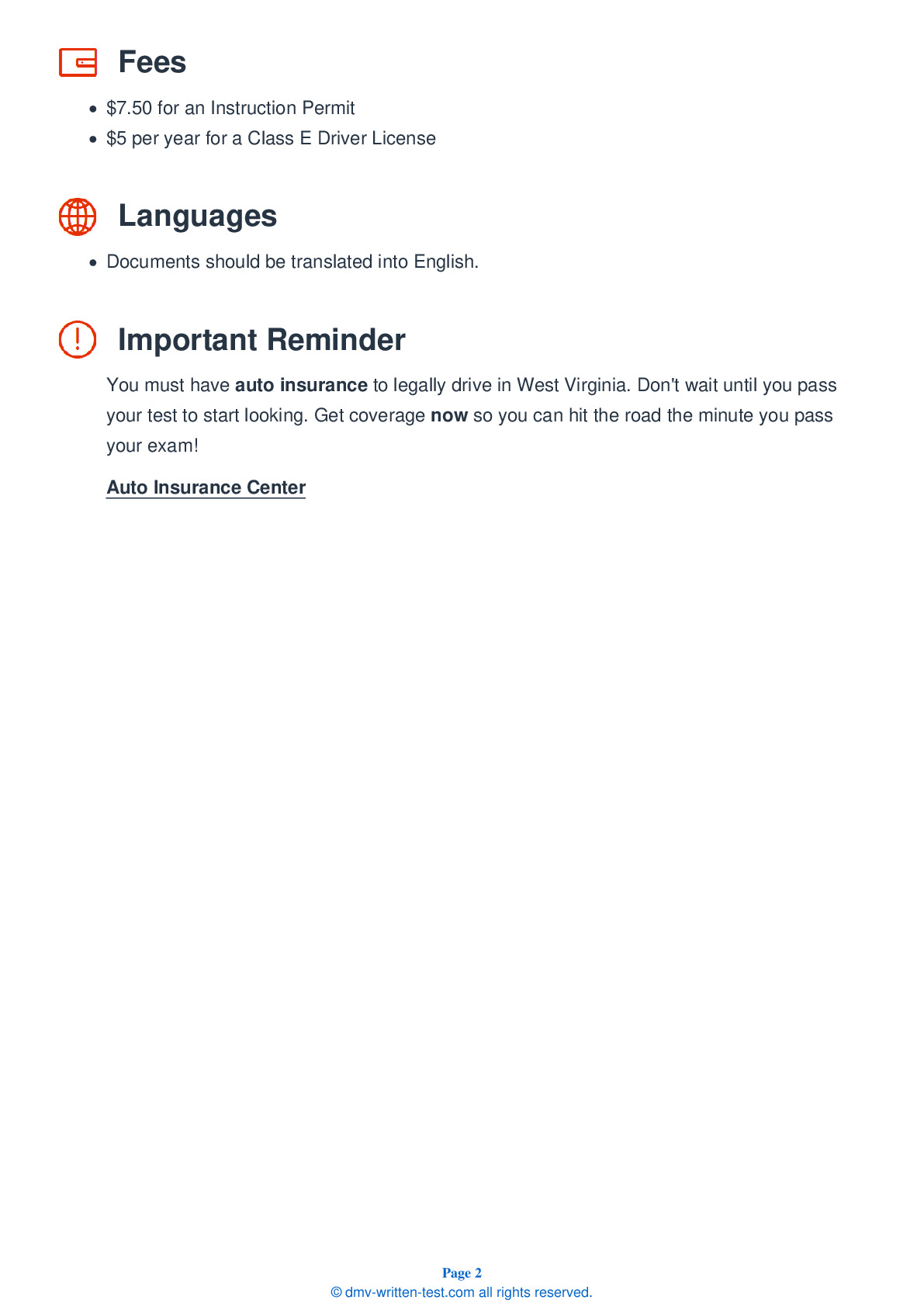2025 West Virginia Permit Test 18
The following questions are from real DMV written tests. These are some of the actual permit questions you will face in West Virginia. Each permit practice test question has three answer choices. Select one answer for each question and select "grade this section." You can find this button at the bottom of the drivers license quiz. For a complete list of questions and answers for West Virginia please visit https://cheat-sheets.dmv-written-test.com/en/west-virginia/car.
Number of Tests
Number of Question
Passing Score
19. To prevent hydroplaning, you should:
Explanation
To prevent hydroplaning, you should ensure that the tires on your vehicle have good tread depth and are inflated to the proper pressure. Reduce the speed of your vehicle when driving in the rain. Hydroplaning occurs most frequently at higher speeds.
20. Passing is prohibited:
Explanation
Passing is prohibited in a curve, on a hill, or in any other location where you would be unable to clearly see oncoming traffic. You may not pass within 100 feet of an intersection, bridge, viaduct, tunnel, underpass, or railroad crossing; when an approaching vehicle is in your passing lane; where signs or road markings prohibit passing; and when a vehicle ahead of you has stopped to let pedestrians cross the road.
21. A person walking with a white cane or guide dog is likely to be:
Explanation
Drivers must always yield the right-of-way to a pedestrian when the pedestrian is a blind person who is using a white cane or guide dog.
22. If you are driving in another driver's blind spot, you should:
Explanation
Do not drive in someone else’s blind spot. Move forward or drop back so that the other driver can see you.
23. At dusk or on overcast days, you should:
Explanation
At dusk or on overcast days, you must turn on your headlights. Dim your lights to their low beam setting when within 1,000 feet of an approaching vehicle and when within 500 feet of a vehicle that you are following. When driving in poor weather, always use your low beams.
24. What does a single dashed yellow line separating traffic mean?
Explanation
Yellow lines separate traffic moving in opposite directions. A single dashed yellow line in the center of a road indicates that vehicles traveling in both directions are permitted to pass. Drivers may only begin a pass if they will not interfere with any oncoming traffic.
25. What should you do if your accelerator sticks while you are driving?
Explanation




